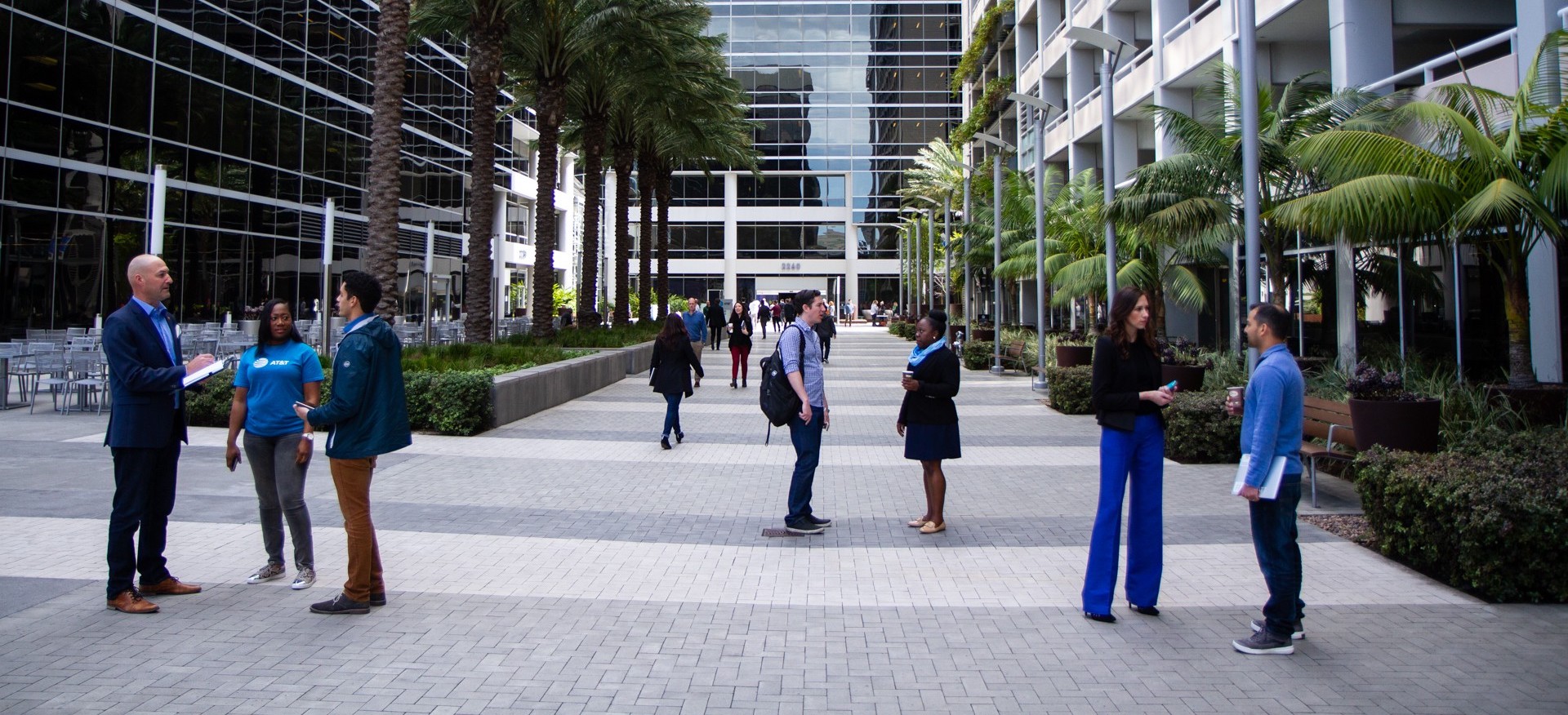AT&T Answers the Call on Meeting Sustainability Targets

The well-known telecommunications company has shown initiative and taken clear action steps to become an environmental leader.
AT&T was inspired to raise its focus on environmental stewardship, as it is one of the biggest companies in the world, thus having a large platform, extensive outreach, and the resources to make a difference for our planet.
“As one of the world’s largest companies, we can play a role in creating a better, more environmentally sustainable future,” said Shannon Thomas Carroll, AT&T’s associate vice president of global environmental sustainability. “We’re acting to address climate change and prepare for its impacts because it is good for our business, for the stakeholders we serve and for our planet.”
Exceeding sustainability goals
According to a 2017 World Economic Forum report, “The billions of devices many of us use every day could produce 3.5% of global emissions within 10 years and 14% by 2040. This would result in the industry using approximately 20% of all of the world’s electricity by 2025. This growing problem threatens to disrupt progress toward climate change goals and exacerbate increasingly stressed power grids.”
In this regard, AT&T is proving to be a leader in telecommunications from a sustainability perspective.
“As the world transitions to a net-zero economy, AT&T is demonstrating leadership by setting aggressive goals and taking purposeful action through a combination of mitigation and adaptation efforts,” Carroll said.
AT&T has two ambitious emissions-reduction commitments:
- A science-based target to reduce its absolute Scope 1 and 2 emissions 63% by 2030 (against a 2015 baseline), which aligns with a pathway to keep global temperature increases to 1.5°C; and
- A goal to achieve net-zero Scope 1 and 2 emissions by 2035.
“We will achieve this by eliminating Scope 1 and 2 emissions through improved energy efficiency efforts, moving to a low-emissions fleet and scaling renewable energy capacity,” Carroll said. “While working to reduce our own greenhouse-gas [GHG] emissions, we’re also helping our customers do the same. And we’re taking steps to protect our network from threats and costly repairs associated with extreme weather events while helping communities identify and address their own vulnerabilities.”

Photo Credit: AT&T
AT&T achieved and/or exceeded several sustainability goals in 2020. One target was to reduce the company’s Scope 1 GHG emissions 20% using a 2008 baseline, and it exceeded the target with a 22.8% reduction compared to its 2008 baseline. In addition, the company aimed to reduce the GHG emissions of its U.S. fleet 30% in 2020 from its 2008 baseline. AT&T exceeded that target, reducing U.S. ground fleet emissions by 38.4% from its 2008 baseline. Lastly, the company aimed to collect 200 million devices for reuse, refurbishment or recycling in 2020. AT&T exceeded that target and has refurbished or recycled approximately 229 million devices since 2007.
“Now we’re focused on achieving our 2030 science-based target and our 2035 net-zero commitment,” Carroll added.
Climate change initiatives
So how does addressing the environment serve AT&T stakeholders and customers?
“By aligning our business with a net-zero economy and adapting to a world being reshaped by climate change, we’re positioning ourselves to deliver long-term value for our stakeholders,” Carroll said. “Climate change is one of the world’s most pressing challenges and poses significant risks to companies.”
According to Carroll, physical risks (e.g., intense storms, droughts and wildfires) threaten infrastructure, supply chains and communities, and transition risks (e.g., policy changes, regulatory and legal shifts, and market expectations) can add business costs and uncertainty.
“Climate change also presents an opportunity for those who will be part of the solution,” she added. “Universal connectivity—nationwide broadband, including 5G—can play a meaningful role in reducing emissions by scaling efficiencies and enabling low-carbon technologies. This presents a business opportunity that also benefits society.”
AT&T is also helping other businesses reduce their carbon emissions.
“We know 5G and other broadband connectivity can help businesses reach their climate goals,” Carroll said. “Since 2015 we have been working with business customers and nonprofits to drive broadband-enabled solutions that help reduce emissions.”
AT&T aims to enable a gigaton of emissions reductions through connectivity solutions for its business customers by 2035.
“To support this goal, AT&T has formed the Connected Climate Initiative [CCI] with leading technology companies, AT&T business customers, universities and environmental nonprofits,” she said. “Through the CCI, AT&T plans to expand businesses’ use of broadband-enabled climate solutions, including 5G, by identifying best practices, exploring new product ideas and use cases, and scaling the innovations of startups.”


Leave a Reply